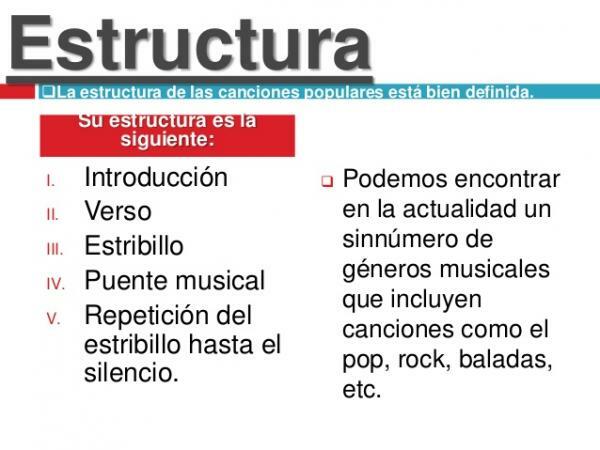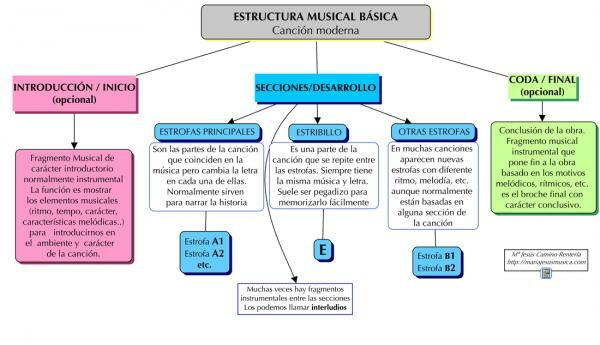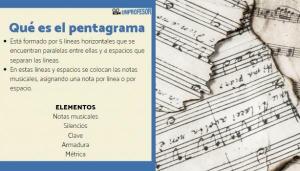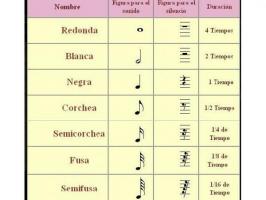Discover how is the STRUCTURE of a song

Our life is accompanied by music. Whether it is what we choose to listen to in our headphones, the speaker of someone passing by on the street, or the playlist of a store. If something is true, it is that our instinct is to sing or follow the rhythm if a song is very good. Music in this sense is a very fun form of communication and a sensitive way of connection.
As the creative beings that we are, we manage to take a physical element such as sound and transform it into something more complex such as musical language or the transmission of feelings or ideas. Having become a language, it is natural that music must have certain rules so that it can be understood and shared, a structure. In this lesson from a TEACHER we will talk about song, the most popular form of music, and about how is the structure of a song.
Index
- What is a song
- The structure of a song
- Origin and history of the song
What is a song.
Music has unlimited forms thanks to our creativity, it is important to clarify from the beginning that not all musical compositions are songs. A song is a musical composition,
specially created to be interpreted by the voice. Taking into account this main idea, a song has lyrics and it can be accompanied by instruments.Knowing this we can correct some misunderstandings that we use popularly, such as when for example we refer to a classic work as a “song” even though it was composed to be performed by instruments, not even including the voice.
The element of the lyrics is also important to take into account, since it can be confusing to know if a song is still it despite having no lyrics. If we strictly adhere to the technical and historical concept, a song is a letter that has been set to music, so from this point of view the lyrics are a key element to recognize if a musical composition is a song.
Nowadays there are many genres and styles of music, so sometimes we can find musical pieces that are interpreted by the voice but do not have a defined letter. In these cases, the technically correct thing would be to think that the voice becomes another instrument, so that, more than a song, it is a piece or musical composition like others.
The structure of a song.
As there are various musical trends, styles and genres, we can ensure that not all songs have the same structure. If we can say that at least, the usual thing is that the main parts of a song are the "verse" and the "chorus". From these elements, the songs can vary and be more complex in structure. The goal of a song is to convey an idea or a message, so its structure tends to be related to that way of getting the message across and giving strength to the most important.
It could also be said that just as in writing, a song tells a story and has a progression of events, so that each part of the song changes both in lyrics and musically. These parts of the song they can be the following:
- Introduction: It is the beginning of the song and it is usually only instrumental or without lyrics. It is a way of presenting the musical concept of the song.
- Verse / stanza: It is the part of the song that changes the text, partially or totally, each time it appears. It generally alternates with the chorus.
- Pre-Chorus / Pre-Chorus: It is a preparation to reach the chorus, connect the verses to make a more subtle transition.
- Chorus / Chorus: It is the most energetic or important point of the song and the one that usually presents the main idea. It alternates with the chorus and is usually the part that is repeated the most. It is for these same reasons that it is also the part we remember the most.
- Bridge: It is used to give variety to the song, it is usually included after having repeated the verses and the chorus a couple of times. Causes an aural resting effect to return more forcefully to the chorus.
- Only: Sometimes a space is included in the songs so that one or more of the musicians can show off their instrument and their musical expression. In this case, all attention is focused on this designated musician or musicians.
- Closing: It is the end of the song, it varies in intensity depending on each composition. Some forms of closing is a certain number of the repetition of the chorus, other times it can be instrumental or gradually (when the volume decreases to 0).
- Coda: It means that at the end of the song, the structure repeats itself from a certain point, until it reaches the final end.
- Other: A different section from what was heard or using some elements of the song. It can provide a more subtle or even more energetic closure, which can be instrumental.
The order of a song
The order and appearance of these parts can vary, if we combine them all in one structure, this would be the usual order of the popular song:
- Introduction
- Verse
- Pre-chorus
- Chorus
- Verse
- Pre-chorus
- Chorus
- Bridge or Solo
- Chorus
- Closure / Coda / Outro
Fortunately the universe of songs has an impressive variety to offer, with different genres, styles, structures and messages that allow us to connect with music from a point personal. Now that you know more about structure, you can be more aware of musical intent and creative genius when listening to a song.

Image: Slideshare
Origin and history of the song.
It is interesting to think of the song in relation to the story because like all musical composition, the songs are closely related to the events of each era and this also influences its structure, among other elements.
As the voice is an instrument that every human being possesses, we know that then he has had the ability to create or sing songs, turning them into a form of expression with different objectives. For example, him Gregorian singing, which was a type of religious song created to recite biblical texts in the first Christian communities (before the Middle Ages), or the songs of the troubadours, who were poets who presented their songs in the stately courts as entertainment. In classical music there is the opera, whose songs are called "arias”. We can also mention the "Work songs" which were improvised compositions by blacks while they worked in America's cotton fields during slavery.
Today we have all that musical legacy of history and we continue to create new songs. The music industry is now a very lucrative enterprise and an expression of popular culture, making its biggest profit from songs.

Image: Music Classes
If you want to read more articles similar to How is the structure of a song, we recommend that you enter our category of Musical language.


